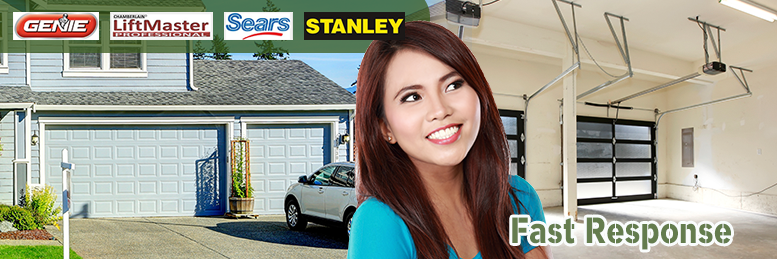916-509-3525 916-509-3525
Garage Door Openers
Back To Our ServicesOne of the most important garage door parts is the opener. With opener installation, the door moves with either electric power or a backup battery, which is actually used when the power is out. The main difference among residential garage door openers is their motor. Depending on the door's weight, the motor might have ½ or ¾ hp. There are also stronger motors, which are useful for extremely heavy doors. Openers work with a metal rod called a screw drive, a rubber called a belt drive, or a chain. Modern openers increase security and safety and enable convenient access. In order for you to enjoy all the benifits, our company suggests frequent garage door opener maintenance.
Garage door opener safety features
 These include the photo eyes and the release cord. Sensors are the prime safety features of each opener. They have been a requirement for protection against entrapment since 1993. Most openers integrate photo eyes installed about 6 inches above the floor. Since they project an infrared beam, they send signals to the opener to reverse the door if anything or anyone is in the way. The reverse mechanism must be tested frequently.
These include the photo eyes and the release cord. Sensors are the prime safety features of each opener. They have been a requirement for protection against entrapment since 1993. Most openers integrate photo eyes installed about 6 inches above the floor. Since they project an infrared beam, they send signals to the opener to reverse the door if anything or anyone is in the way. The reverse mechanism must be tested frequently.
The release cord hangs from the trolley. When it is pulled down, the opener is disengaged and you can open the door manually. This is useful for openers without backup batteries and if there is a power outage. The cord is often referred to as an emergency release rope since it can help someone entrapped under the door.
Opener reverse mechanism testing
With the safety features being really important for avoiding accidents, the reverse mechanism must be checked often. Place an object on the floor and press the garage door clickerto close the door. The door shouldn't move. If you place the object as the door is descending, the door should reverse upon contact. If it fails to do so, let our professionals troubleshoot the problem.
Garage door force adjustment
The force of your overhead door is adjusted by the opener. Too much force will keep the reverse mechanism from working properly. Door force should be tested regularly. In order for you to test the downforce, grab the door as it comes down. It should reverse. If it doesn't, the downforce button in the opener box should be turned counter clockwise to decrease force. If the door reverses, but the lights aren't flashing, turn the button clockwise. Test the force when the door moves upwards, too. If you grab its bottom part, it should stop. If it doesn't, turn the button counter clockwise. If you need our assistance, let us know.
Opener replacements in Sacramento
Replacements are necessary when components or the entire opener system is beyond repair. Our team at “Garage Door Repair Sacramento” fixes any opener problem and offers fast response troubleshooting and garage door repair, but you can also count on us to replace the sensors, trolley, chain or wires. We also offer opener replacement and installation. Let us help you with any of your needs. Give us a call!
.png)

